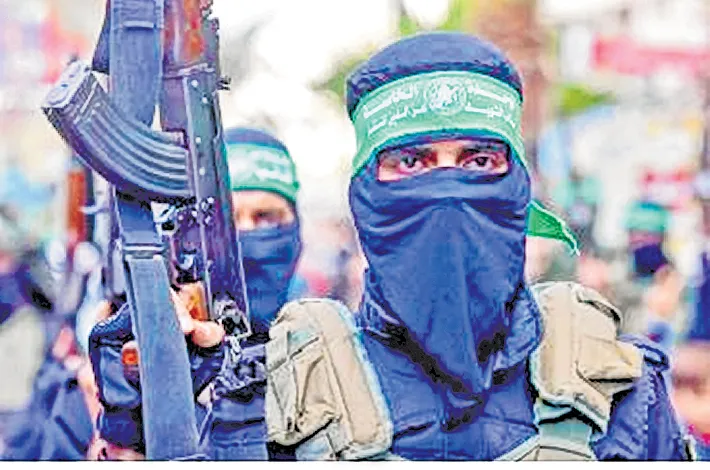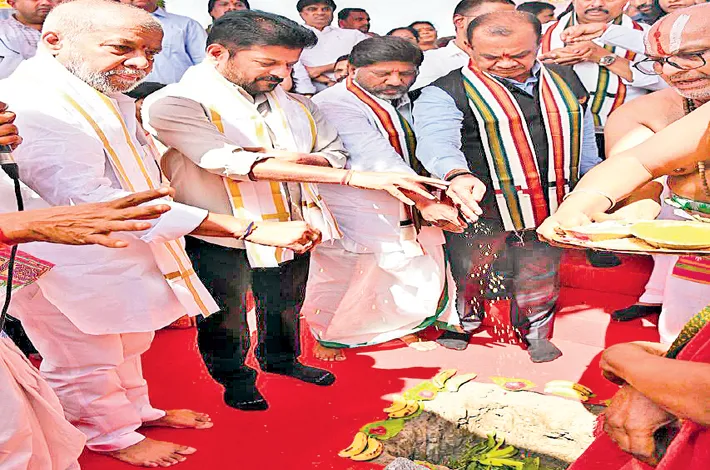Hamas still in control of Gaza
23-01-2025 12:00:00 AM

Prospects of peace | Israel has indicated that Islamist group can play no role and it does not trust the Palestinian Authority leadership
Agencies CAIRO
In neighborhoods ravaged by 15 months of war with Israel, Hamas officials are clearing rubble following Sunday's ceasefire. Hamas gunmen guard aid convoys on Gaza's dusty roads, and blue-uniformed police patrol city streets, signaling the group’s continued control.
Israeli officials described Hamas' public celebrations of the ceasefire as a staged effort to exaggerate its strength. However, Gaza's Hamas-run administration has swiftly moved to restore security, curb looting, and reestablish basic services in areas devastated by Israeli offensives.
Despite Israel’s efforts to dismantle Hamas, the group remains deeply entrenched. Hamas controls Gaza's security forces, oversees ministries, and coordinates with international NGOs. "We want to prevent any security vacuum," said Ismail Al-Thawabta, director of the Hamas-run Gaza government media office. He noted that 700 police officers now protect aid convoys, with no reported looting since the ceasefire began.
Israeli airstrikes in recent weeks targeted lower-ranking administrators and Hamas leadership, including Ismail Haniyeh, Yahya Sinwar, and Mohammed Deif. Yet, Al-Thawabta reported that 18,000 employees are still working to provide services. Workers have begun clearing rubble and repairing infrastructure to restore running water. Trucks are transporting debris along Gaza’s main roads.
Israeli Prime Minister Benjamin Netanyahu has not outlined a postwar vision for Gaza beyond ruling out roles for Hamas or the Palestinian Authority (PA). Joost Hiltermann of the International Crisis Group said Hamas’ grip on Gaza leaves Israel with limited options: continued conflict or arrangements that involve the PA with Hamas' acquiescence. Hamas’ military strength remains uncertain, but it is still Gaza's dominant armed group.
While Hamas officials support a unity government, PA leader Mahmoud Abbas, a long-standing Hamas adversary, has not agreed. The PA’s absence in Gaza and its low popularity pose challenges to its governance.
Under the ceasefire terms, Israel must withdraw troops from central Gaza, allowing Palestinians to return to the north. An initial six-week phase will involve hostage releases, followed by negotiations for a permanent ceasefire and Israeli withdrawal. Reconstruction, estimated to cost billions, would begin in a later phase.
The ceasefire has divided Israeli opinion. While the return of hostages brought relief, many Israelis demand Hamas’ eradication, citing its October 2023 attack that killed 1,200 people and took over 250 hostages. Foreign Minister Gideon Saar stated, "There is no peace or security if Hamas remains in power."
Hamas' armed wing, Abu Ubaida, affirmed its commitment to the ceasefire, urging Israel to comply. Gaza remains a wasteland of rubble and bombed-out buildings, with hundreds of thousands living in dire conditions. More than 46,000 people have died, according to Palestinian health authorities. Aid convoys now deliver 600 trucks of supplies daily, facilitated by Hamas’ coordination with relief agencies.
A U.N. damage report revealed clearing Gaza's rubble could take 21 years and cost $1.2 billion. International discussions on postwar governance include peacekeepers or temporary oversight by nations like the UAE and U.S. under a reformed PA.
Egypt advocates for a joint Fatah-Hamas committee under PA supervision. While Hamas expresses willingness to discuss a unity government, analysts like Michael Milshtein believe this is superficial. “As long as they manage matters behind the scenes, they are indifferent to front-facing arrangements,” he said.








